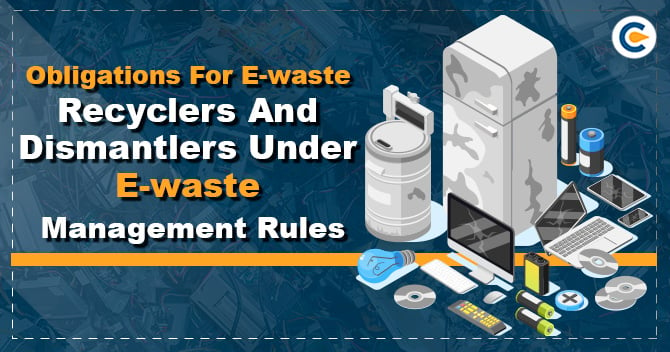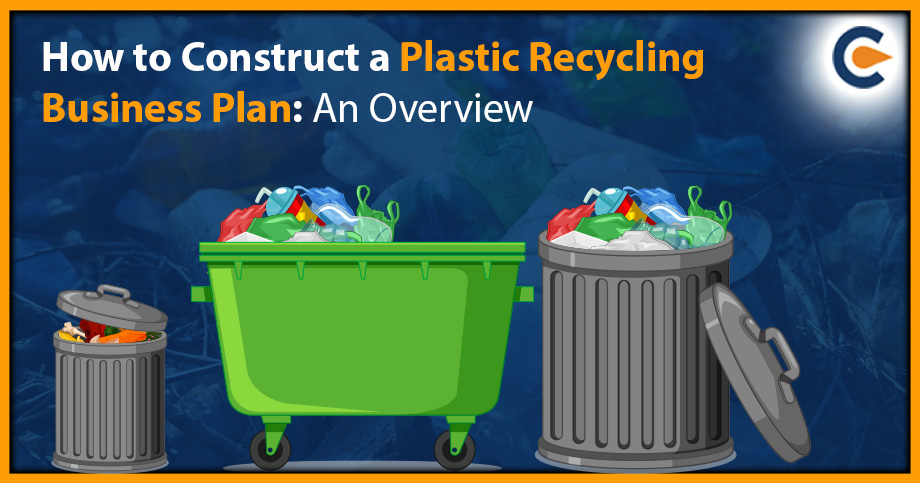E-waste is the fastest growing waste that can cause harm to the environment as well as human health if left untreated or not treated properly. In most developing countries, it is treated with inadequate technologies under critical health conditions that can have negative impacts on the environment. An effective e-waste management strategy with a planned e-waste business plan is required to deal with this situation. Dismantling e-waste is an opportunity for businesses to set up a sustainable recycling business.
Definition of dismantler
Any person or entity engaged in dismantling the used EEE into their components having authorization from the State Pollution Control Board (SPCB) according to the CPCB guidelines is called a dismantler.
Responsibilities of the Dismantler
The following are the responsibilities imposed on a dismantler who is preparing an e-waste business plan under the E-waste Management Rules:
- To make sure that the facility and the dismantling processes are as per the CPCB guidelines and standards.
- To obtain the required authorization from the concerned State Pollution Control Board.
- To ensure that during the storage and transportation of the e-waste, no damage has been caused.
- To make sure that the dismantled e-waste is properly segregated and sent to recycling facilities for recovery of materials.
- To make sure that the non-recoverable and non-recyclable materials are sent to the proper treatment storage and disposal facilities.
- To maintain records of the e-waste collected, dismantled and sent to recyclers and present such reports to the CPCB or SPCB for scrutiny.
- To file a return to the concerned SPCB on or before 30th June of the financial year.
- To obtain authorization from the concerned SPCB as a recycler to refine and recover materials before processing any e-waste for recovery or refining of the materials.
- To obtain appropriate authorization before starting any operation; otherwise, it will be regarded as causing damage to the environment.
Challenges in implementing dismantling e-waste business plan
The challenges faced in implementing a new dismantling business are:
- There is a need for an efficient strategy for the collection of e-waste from different places. Such strategies have to be identified and set up, and eventually, the purchase price has to be paid for e-waste.
- The collected appliances have some value, and some of them have intrinsic value where revenues from dismantling these appliances cover the treatment costs. The dismantling and disposal expenses are higher than reasonable revenues for some other appliances like CRT devices.
- The output fractions like copper, steel, and aluminium can be locally commercialized. And for other fractions like printed circuit boards, a global market is needed, which has volatile characteristics.
- The costs of transport for output fractions to different downstream partners on regional, national and international levels may vary with different locations.
- It is necessary to dismantle appliances depending on the local wage level and existing mechanical recycling plants in that region into as many pure materials as possible.
- Focusing on de-pollution, applying a more superficial dismantling strategy.
The e-waste business plan for manual dismantling facilities
The e-waste business plan for manual dismantling facilities has two versions:
- An open-source for the calculation on an annual basis
- Calculating an entire five years e-waste business plan.
The average time taken for dismantling the e-waste has been divided into three different efficiency scenarios, i.e., high, medium and low. There are three different types of dismantling levels as described here:
- Hazardous and high-value materials are only removed, and the rest parts are sent for mechanical separation or recycling.
- Apart from removing the hazardous materials, the manual dismantling of the materials into more or less pure materials and the recyclable fraction is done with reasonable efforts.
- E-wastes are dismantled till a specific point, from where further separation is not possible without mechanical shredding.
Procedure for grant of authorization to the dismantler
Before starting the e-waste business and before preparing any e-waste business plan, every dismantler must obtain authorization from the appropriate authority. The procedure for grant of such authorization has been provided under the E-waste Management Rules, which are as follows:
- Every dismantler makes an application to the concerned State Pollution Control Board to obtain the authorization with the following documents:
- Consent to Establish by the SPCB under Water and Air Act[1]
- The Certificate of Registration issued by the District Industries Centre or any other authorized Government agency.
- The proof of the installed capacity of plant and machinery is issued by the District Industries Centre or any authorized Government agency.
- The SPCB, on its satisfaction that the application is complete and the applicant is utilizing the environmentally sound technologies and possess adequate technical capabilities, required facilities and equipment to dismantle and process e-waste as per the compliance of the guidelines issued by the CPCB.
- The SPCB also inspect the site and then grants authorization with necessary conditions for carrying out the safe operations in the authorized place only.
- The SPCB disposes the application by the applicant for authorization within a period of 120 days from the date of a complete application.
- The authorization is granted accompanied by a copy of filed inspection report signed by such Board by indicating the adequacy of facilities for dismantling the e-waste and the guidelines that the CPCB timely specifies.
Other related information regarding the dismantler authorization
The dismantler authorization granted by the concerned SPCB is valid for a period of five years from the date of issue of such authorization.
If the SPCB has reasons to believe that the authorized dismantler has failed to comply with any provisions of the Act or Rules they are governed under or any guidelines specified by the CPCB, then it can refuse, suspend or cancel the authorization of such dismantler. The SPCB refuses, suspends or cancels such authorization after giving an opportunity to be heard to such dismantler and after recording the reasons thereof.
The authorization of the dismantler has to be renewed. The application for such renewal is made 120 days before the expiry of such authorization. The appropriate SPCB renews such authorization for a further five years. The renewal by SPCB is done after examining the merit of the case and on the condition that there has been no violation of any provisions of the related Act or Rules or any conditions specified thereunder by the CPCB.
Conclusion
The e-waste business plan for dismantlers mostly contains compliance with the guidelines to be followed by the dismantlers. It also has the process of dismantling, such as separation of reusable materials, removal and controlled disposal of hazardous components, etc. Manual dismantling is more in operation in our country. Before starting the business of dismantling, the dismantlers are required authorization from the concerned State Pollution Control Board.
Read our Article:Importance of E-waste recycling business plan











